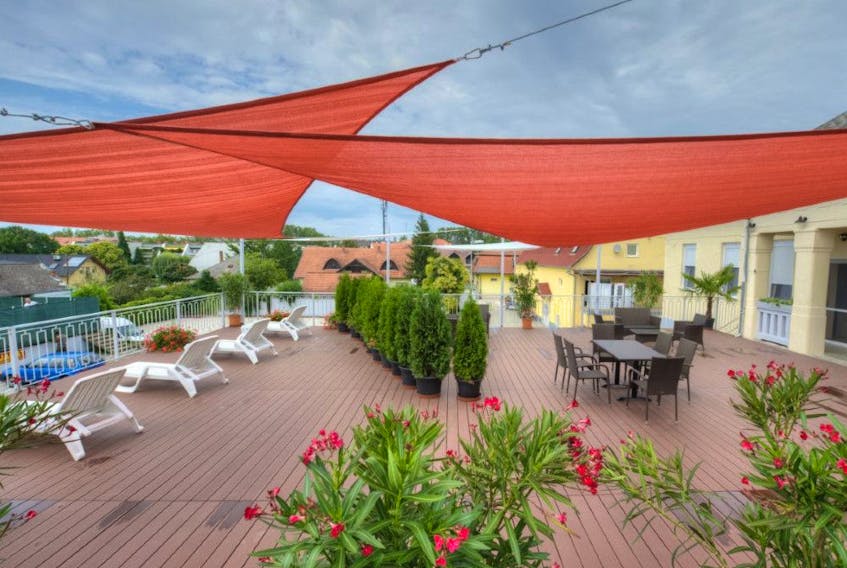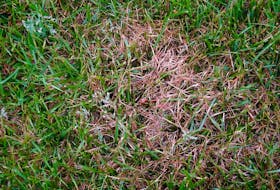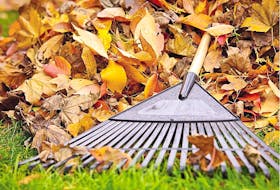Q How can I find where wood is located behind aluminum siding so I can screw an anchor into it? My goal is to install a shade sail extending from the exterior wall of my house to the outer edge of a deck . Shade sails are large pieces of cloth meant to offer protection from sun and rain, and they need to be anchored securely against wind pressure. The house was built in 1959 and the aluminum siding was added over the original wood siding.
A Given the fact that your house was built more than 60 years ago, chances are good that it has a greater thickness of sheathing underneath the aluminum siding than a modern house would. Also, there’s the old wood siding that’s still there underneath the aluminum, too. With all this in mind, I think you’re safe to install a screw eye anywhere you like on an exterior wall. I wouldn’t recommend this for a modern house because the only thing underneath the siding is probably 7/16”-thick wafer board. That’s too thin to anchor hold anything, but your place is different.
If you wanted to go all out and try and hit a wall stud as well as the 1 1/2” of solid wood that’s probably present underneath, here’s an idea. Go into the room behind the area where you’d like to install the screw eye and use a stud finder to determine wall stud location on an interior wall surface. Measure the distance from the centre of this stud to the edge of the window I see on your photo. If you go outside and measure over from the window this same amount you should hit the same stud but from the outside. I’d try this approach, but I expect you’ll also be fine even if you do miss the stud.
Refinishing a fiberglass exterior door
Q Is it reasonable for me to strip and refinish the fiberglass double exterior doors at my house? They face south and the old stain is in bad shape. I’ve been quoted $800 to $2,000 to do this job, but I can’t afford it.
A Those are pretty big numbers, but the good news is that stripping and refinishing is definitely something you can do yourself. The process is similar to working with a wood door, but with key differences.
The main difference is that stripping fiberglass involves more gentle scraping and brushing and less sanding than wood. Start work by removing the door and all hardware. You need to have your doors horizontal for best results. The process will take some time, too, so you’ll need to rig something up on your doorway if you don’t have a screen door. Apply a mild paint stripper to a small, inconspicuous place to make sure that it doesn’t hurt the fiberglass. A product called Citristrip is a citrus-based paint stripper that should not harm your door. Test to make sure.
Apply the stripper, let it sit for 20 minutes, then use a plastic scraper (not metal) to peel off as much of the old finish as possible. If your door has nooks and crannies from various decorative panels that may be part of the design, use a tooth brush to remove the old finish in close quarters. You’ll probably have to apply, scrape and brush at least twice. When the old finish is completely gone, use a shop vac or leaf blower to remove all remaining dust, then apply a gel stain with a foam brush. Since fiberglass isn’t absorbent like wood, you’ll need to be careful to apply an even coat of stain. Let the stain dry for a couple of days, then apply three coats of exterior sealer. Helmsman spar varnish in the satin formulation has worked well for me.
Steve Maxwell always likes well-finished surfaces. Learn all about home improvements and hands-on living at Steve’s website BaileyLineRoad.com
Copyright Postmedia Network Inc., 2020









